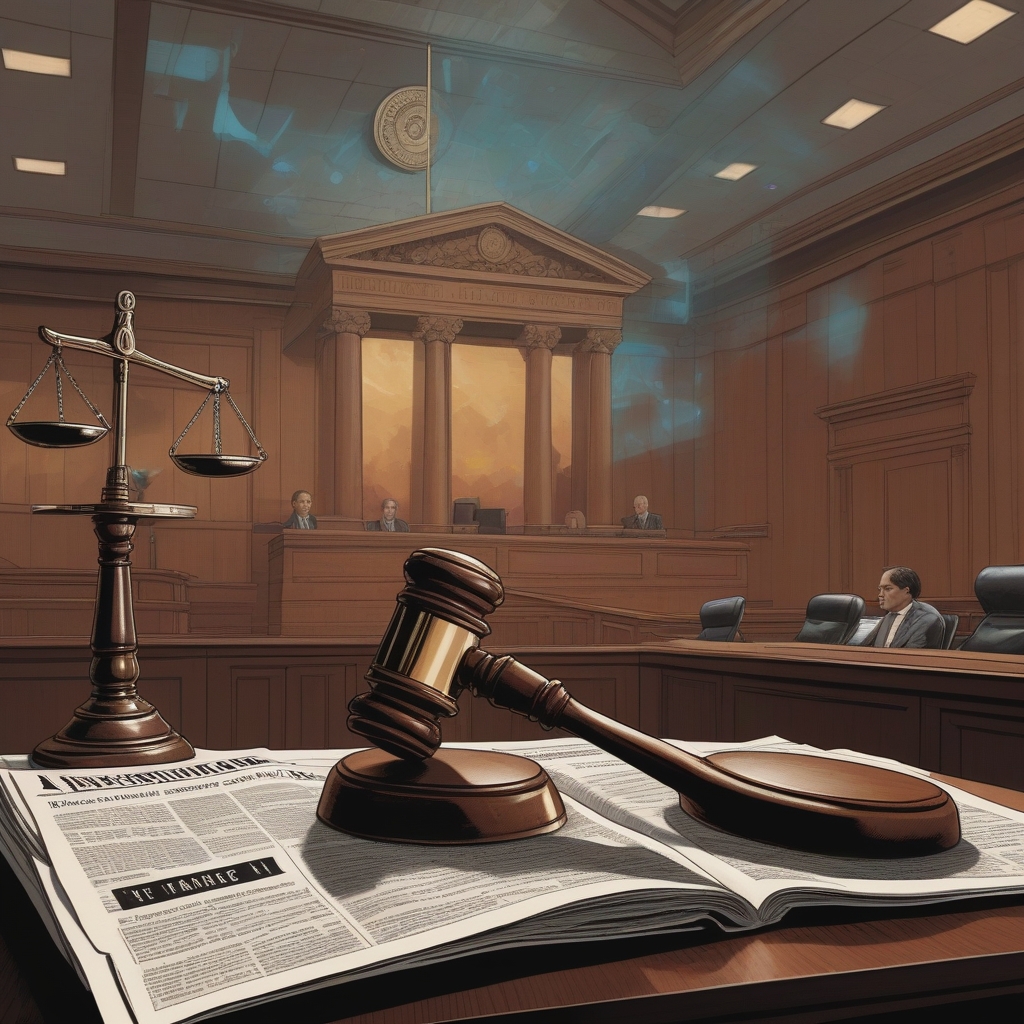The Growing Clash Between AI and Traditional Publishing
In an era where technology is advancing at an unprecedented pace, the publishing industry finds itself at a crossroads. Recent developments have sparked heated discussions about whether artificial intelligence, particularly in the form of news summaries, threatens traditional publishers like The New York Times. As AI continues to evolve, the line between innovation and intellectual property infringement becomes increasingly blurred.
The Rise of AI-Generated Content
The past few years have seen a rapid rise in AI-generated content. From chatbots providing customer service to sophisticated algorithms crafting articles, AI has proven its capability to perform tasks traditionally associated with human intelligence. News aggregators and content summarizers utilize these technologies to offer concise synopses of lengthy articles, appealing to audiences seeking quick consumption of information.
While AI’s ability to process and summarize large volumes of information presents exciting possibilities, it also raises critical concerns for publishers. These tools have the potential to drive traffic away from original sources, impacting ad revenue and threatening the financial sustainability of news organizations.
Legal Challenges: A Battle for Intellectual Property
For publishers, copyright infringement is at the heart of the issue with AI-generated summaries. The New York Times and other leading media outlets argue that these summaries can bypass paywalls, providing users with vital information without compensating the content creators. This practice not only impacts revenues but also stands to compromise the journalistic integrity that such publications strive to uphold.
The legal landscape is still catching up with technological advancements. Current copyright laws were not designed to address the nuances of AI, leaving publishers and AI developers in a gray area reminiscent of past technological disruptions in music and film. The lack of clear legal guidelines makes protecting intellectual property against AI use particularly arduous for traditional media companies.
The Implications for Traditional Media
The current confrontation poses significant implications for traditional media. In seeking a solution, publishers face a dilemma; they must adapt to the digital age while protecting their established business models. There are several potential paths forward:
- Litigation: Pursuing legal action against AI companies could set a precedent for the future, but it also involves resource-intensive processes and potential resistance from tech giants.
- Licensing Agreements: Establishing collaborations with AI platforms could lead to mutually beneficial agreements, whereby publishers receive compensation for the use of their content.
- Technological Adaptation: Embracing AI as a tool rather than a threat may enable publishers to enhance their own platforms, offering better and more efficient content delivery to their audiences.
Each approach presents its own set of challenges and requires introspection from media outlets on their long-term vision in a landscape where technology is king.
The Evolution of Audience Engagement
It’s critical to recognize that audience behaviors are changing in parallel with technological developments. Today’s readers demand instant access and brief, engaging content. To remain relevant, traditional media must leverage analytics and data to understand and anticipate audience preferences, tailoring content accordingly.
Innovative engagement strategies, like personalized newsletters and interactive content formats, can enhance user experience, strengthening reader loyalty in an era of content saturation. Furthermore, media companies stand to benefit from embracing technologies like AI for their own content curation and distribution methods.
The Path Forward: Collaboration or Confrontation?
Whether the relationship between traditional publishers and AI developers turns toward collaboration or remains confrontational will depend on the legal and ethical frameworks that emerge in these discussions. The stakes are high, with the potential to redefine the boundaries between human and machine-generated content and reshape the future of media.
Ultimately, fostering dialogue between publishers, AI companies, legal experts, and policymakers is essential to address these complex issues. Continued exploration of this balance will ensure that innovations enhance, rather than undermine, the authenticity and credibility of journalism.
Conclusion: A Call to Action
The current legal and technological battle between The New York Times and AI-driven content platforms is but a single chapter in the broader saga of technology’s impact on traditional business models. It calls for stakeholders across industries to confront these challenges collaboratively.
Publishers must remain vigilant as technology continues to evolve. Balancing the protection of intellectual property with the reality of digital transformation will be crucial to sustaining a viable media landscape. As AI continues to influence every facet of our lives, engaging in nuanced discussions about the role of such technology in content creation will determine the future trajectory of media consumption.
The clash between AI and traditional media is not simply a battle for financial survival; it is a defining moment in the evolution of information dissemination. It will require creativity, cooperation, and a willingness to innovate if publishers hope to thrive in an increasingly interconnected world.

Leave a Reply